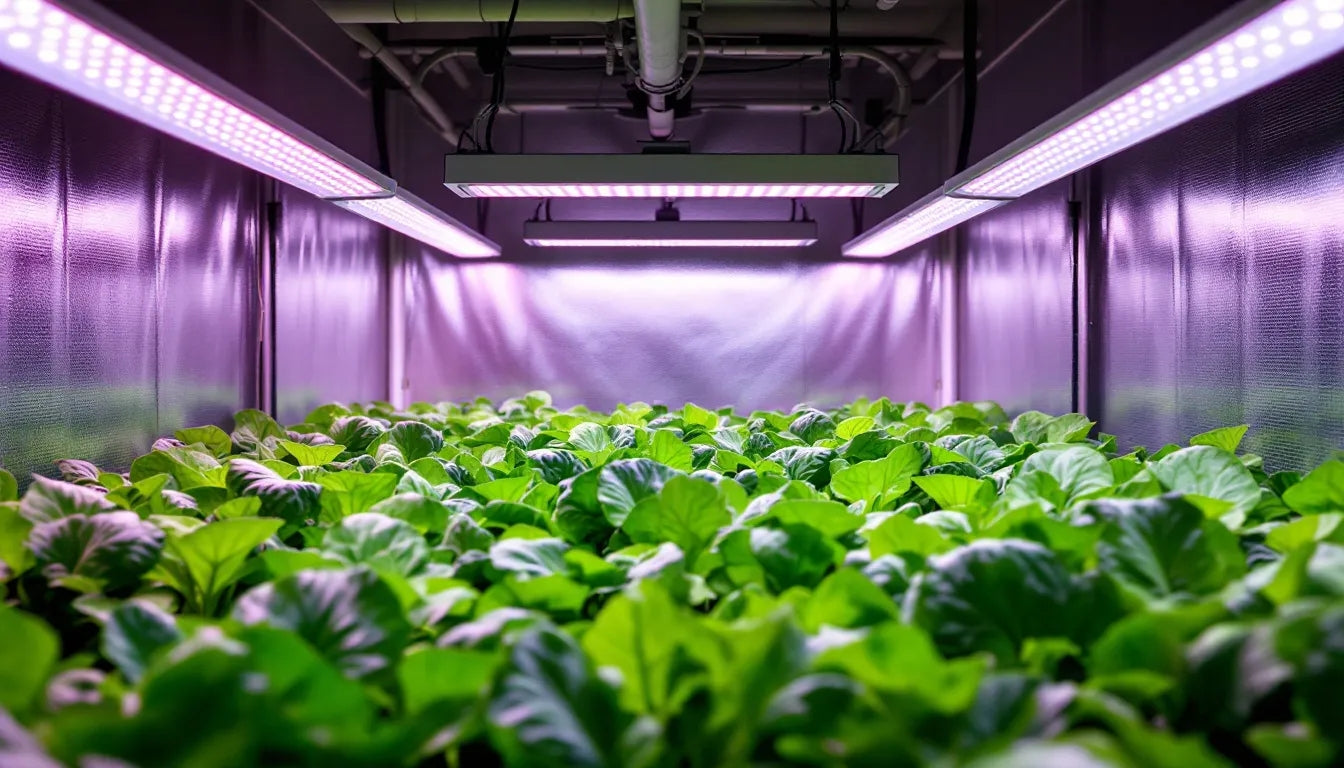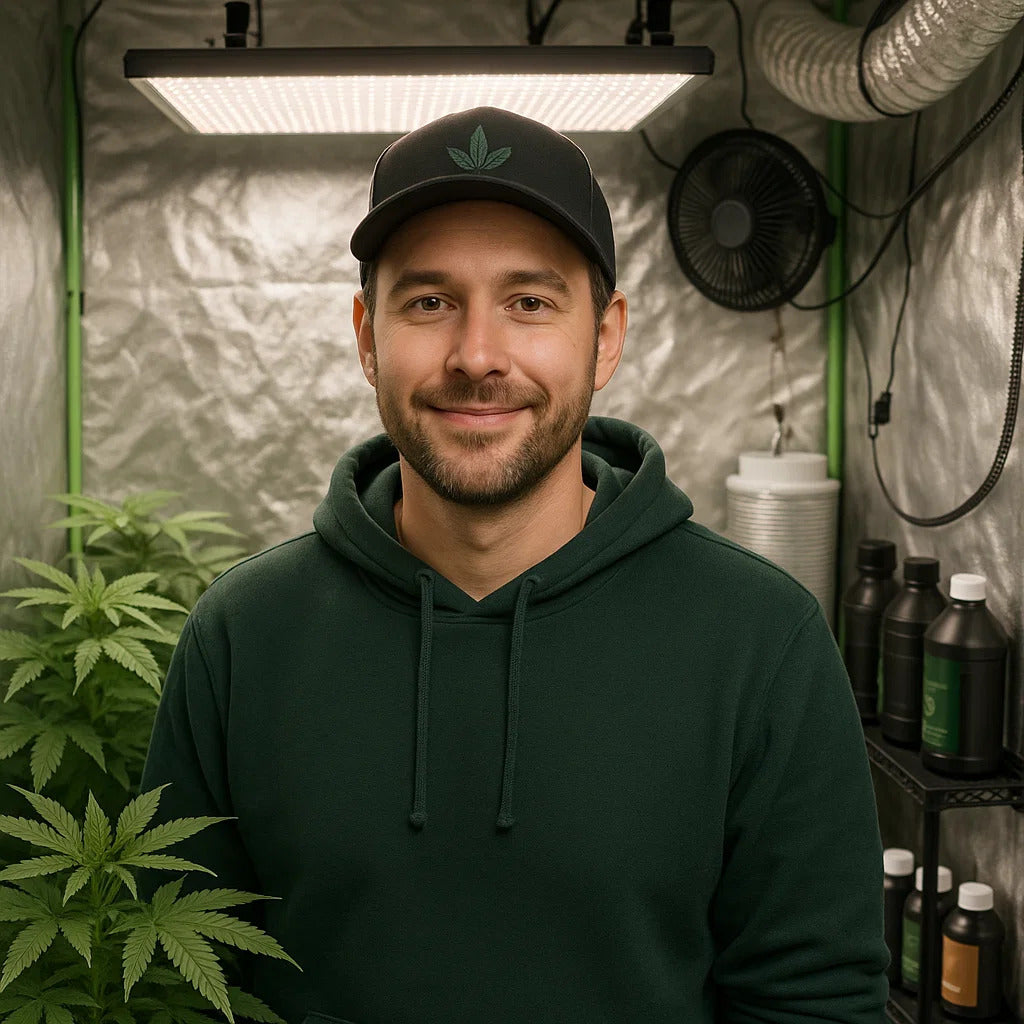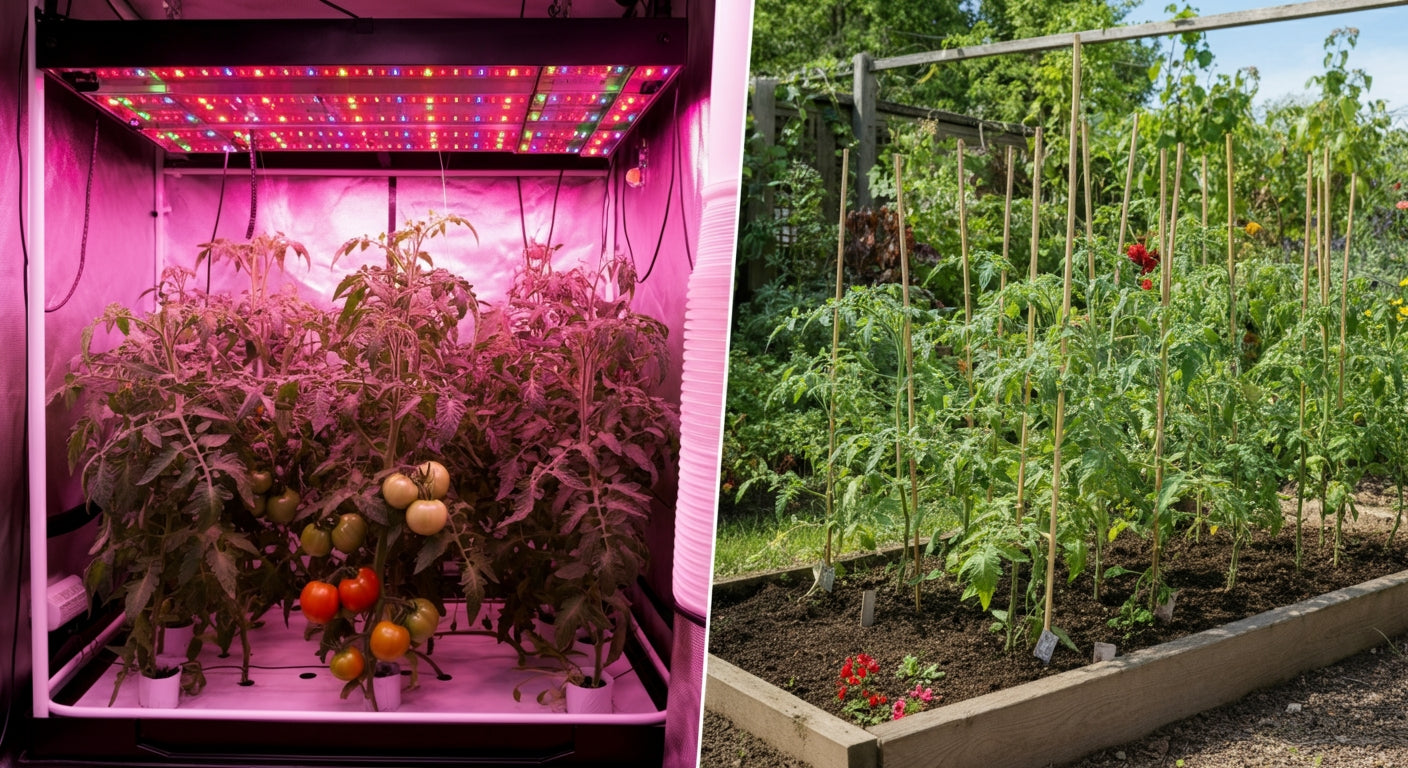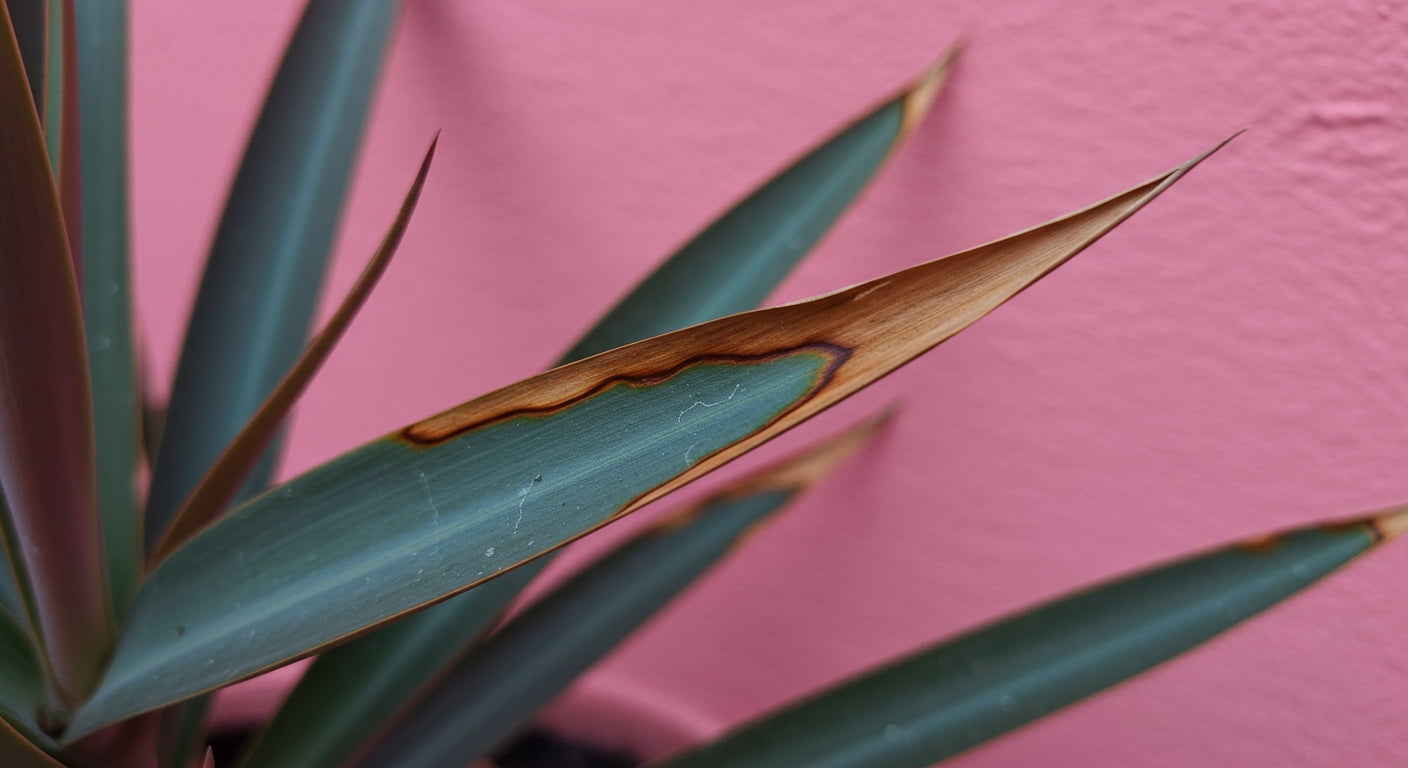
How to Grow Plants Indoors: Complete 2025 Beginner's Guide
Indoor cultivation has revolutionized how growers produce high-quality plants with complete environmental control. Whether you're a medical patient or recreational enthusiast in legal jurisdictions, growing plants indoors offers unmatched quality, consistency, and year-round harvests.
This comprehensive guide covers everything you need to know about indoor growing, from selecting the right equipment to harvesting your first crop. With proper setup and attention to detail, indoor growing produces superior results compared to outdoor cultivation.

Why Choose Indoor Growing?
Complete Environmental Control
Indoor growing allows precise control over every aspect of your plant's environment. You can optimize temperature, humidity, lighting schedules, and air circulation for maximum plant health and potency.
Unlike outdoor growing, indoor cultivation eliminates weather-related stress, pest pressure, and seasonal limitations. This control translates directly into higher yields and more consistent quality.
Gorilla Grow Tents provide the perfect controlled environment, featuring 1680D fabric density that's 9x thicker than standard tents, ensuring complete light control and durability for long-term growing success.
Year-Round Growing Capability
Indoor cultivation enables continuous harvests regardless of season or climate. Most growers can achieve 4-6 harvest cycles annually with proper planning and setup.
This consistent production capability makes indoor growing particularly attractive for medical patients requiring reliable access to their medicine throughout the year.
Essential Equipment for Indoor Growing
Grow Tent Selection and Setup
Your grow tent serves as the foundation of your indoor garden. Size selection depends on your growing goals and available space.
For beginners, a 3x3 grow tent accommodates 1-4 plants comfortably, while experienced growers often prefer 5x5 grow tents for larger harvests and multiple strains.
Quality matters significantly in tent selection. Premium tents feature industrial-grade zippers, reinforced stitching, and superior light-proofing that prevents light leaks during dark periods – critical for proper flowering.
Lighting Systems for Maximum Yields
Modern LED grow lights have become the gold standard for indoor cultivation. They offer superior efficiency, controllable spectrums, and significantly lower heat output compared to traditional lighting.
Full-spectrum LEDs provide optimal light wavelengths throughout all growth phases. Many advanced systems include UV and far-red diodes that enhance terpene production and overall plant quality.
Calculate approximately 30-50 watts per square foot for LED lighting. A 4x4 tent typically requires 480-800 watts of LED power for optimal results.
Ventilation and Air Quality Management
Proper airflow prevents mold, controls temperature, and strengthens plant stems through gentle air movement. Install intake and exhaust fans to create continuous air exchange.
Carbon filters eliminate odors – essential for discrete growing. Position exhaust fans at the tent's highest point, as warm air naturally rises.
Oscillating fans inside the tent provide beneficial air movement directly to plants, simulating natural breezes that strengthen stems and improve nutrient uptake.

Growing Medium and Nutrition
Soil vs Hydroponic Systems
Soil growing offers simplicity and forgiveness for beginners. High-quality organic soil provides natural nutrients and beneficial microorganisms that support plant health.
Hydroponic systems enable faster growth and larger yields but require more precise nutrient management. Consider starting with soil for your first grows before advancing to hydroponics.
Lotus Nutrients provide complete nutrition solutions designed specifically for indoor cultivation, offering simplified feeding schedules without compromising plant health.
Nutrient Management Throughout Growth Phases
Plants require different nutrient ratios during vegetative and flowering stages. Vegetative growth demands higher nitrogen levels, while flowering requires increased phosphorus and potassium.
Monitor pH levels regularly – soil should maintain 6.0-7.0 pH, while hydroponic systems prefer 5.5-6.5 pH. Incorrect pH prevents nutrient uptake regardless of feeding schedules.
Cal-Mag supplements address common deficiencies, particularly in LED-grown plants and coco coir growing media.
Growth Stages and Training Techniques
Seedling and Vegetative Stage Management
Seedlings require gentle conditions with moderate lighting and consistent moisture. Gradually increase light intensity as plants develop their first true leaves.
During vegetative growth, maintain 18-24 hour daily lighting to prevent premature flowering. This stage typically lasts 4-8 weeks depending on desired plant size.
Flowering Stage Optimization
Flowering begins when you switch to 12 hours light/12 hours darkness daily. This photoperiod triggers hormonal changes that initiate bud development.
Maintain complete darkness during dark periods – even small light leaks can disrupt flowering and cause plants to revert to vegetative growth.
Plant Training for Maximum Yields
Low-stress training (LST) and Screen of Green (SCROG) techniques maximize yields by creating even canopy heights and increasing flowering sites.
Start training early in vegetative growth when plants are flexible. Avoid high-stress techniques like topping during flowering as recovery time is limited.
Environmental Control and Monitoring
Temperature and Humidity Management
Maintain 70-80°F (21-27°C) during lights-on periods and 60-70°F (15-21°C) during dark periods. Consistent temperatures promote healthy growth and prevent stress.
Humidity should be 40-60% during vegetative growth and 40-50% during flowering. Lower humidity during late flowering prevents mold and improves terpene development.
Light Schedules and Photoperiods
Vegetative stage: 18-24 hours daily lighting Flowering stage: 12 hours light/12 hours darkness Maintain consistent schedules – timer reliability is crucial for proper plant development.
Harvesting and Post-Harvest Processing
Determining Harvest Timing
Harvest timing significantly impacts potency and effect profile. Use a jeweler's loupe to examine trichomes – clear trichomes indicate early harvest, cloudy trichomes show peak potency, and amber trichomes suggest increased sedative effects.
Most strains require 8-12 weeks of flowering before reaching optimal harvest maturity.
Drying and Curing Process
Proper drying preserves potency and prevents mold. Hanging drying racks provide efficient space utilization during the drying process.
Maintain 60-65°F with 45-55% humidity during drying. This process typically takes 7-14 days depending on environmental conditions and bud density.
Legal Considerations and Compliance
Know Your Local Laws
Laws vary significantly by jurisdiction. Ensure you understand local regulations regarding:
- Plant count limits
- Possession limits
- Medical vs recreational requirements
- Home growing permissions
Security and Discretion
Maintain discretion through proper odor control, light leak prevention, and secure growing areas. Quality equipment like Gorilla Grow Cabinets offer additional security and stealth for discrete growing.
FAQ Section
How many plants can I grow in a 4x4 tent? A 4x4 tent accommodates 4-9 plants depending on training methods and desired plant size. Fewer plants allow larger individual specimens, while more plants enable faster harvests with smaller plants.
What's the total cost to start growing indoors? Initial setup costs range from $500-2000 depending on tent size and equipment quality. Higher initial investment in quality equipment saves money long-term through improved yields and equipment longevity.
How long from seed to harvest? Total grow time is typically 3-6 months: 4-8 weeks vegetative growth plus 8-12 weeks flowering. Autoflowering varieties can complete full cycles in 10-12 weeks.
Do I need special permits to grow? Requirements vary by location. Many areas require medical cards or adult-use licenses. Research local regulations thoroughly before beginning cultivation.
What's the average yield from indoor growing? Indoor yields typically range from 1-2 grams per watt of lighting with proper techniques. A 600W LED system can produce 600-1200 grams per harvest cycle.
Quick Growing Summary
Successful indoor cultivation requires quality equipment, environmental control, and attention to detail throughout all growth stages. Invest in reliable equipment like professional grow tents and full-spectrum lighting for consistent results and maximum yields.
Proper setup and technique produce superior quality compared to outdoor growing, with complete control over potency, terpene profiles, and harvest timing.
Ready to start your indoor growing journey? Explore our complete selection of grow tent kits designed specifically for successful cultivation. Our professional-grade equipment ensures optimal growing conditions from seed to harvest. Check our latest deals to get started with premium growing equipment at competitive prices.

Lena Myles
I'm a mushroom enthusiast and home cook based in Oregon. I'm passionate about foraging and creating fungi-focused recipes, especially delicious, plant-based dishes using gourmet mushrooms like trumpet, shiitake, and oyster. When I’m not in the kitchen, you’ll usually find me wandering the woods in search of new wild flavors.


